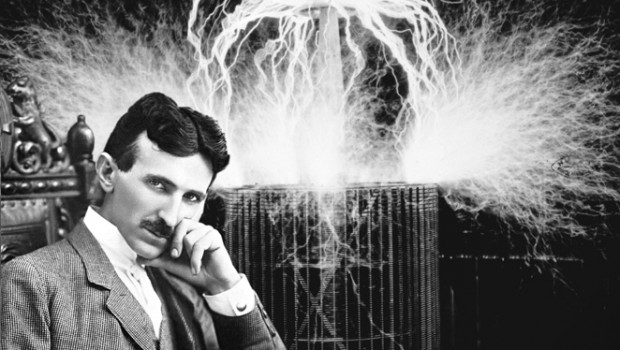I’ve had various friends and family members inquire about the power supplied on a sailing boat like Wayfinder. My dad (who will accompany me on the delivery cruise from South Africa to Florida) wondered if we’d have AC power on the boat, or just 12V DC. How does a microwave work at sea? My mom wanted to know what the stove and range run on. I take these things for granted, but they seem interesting to others, so I thought I’d take readers on a tour of the power systems aboard Wayfinder.
For some perspective, I’ll start with a brief look at my power systems on Xerxes. This was the 27′ sailboat I lived on while in college, and would later sail to the Bahamas and then live aboard in Florida before sailing back to Charleston. When at the dock, I could plug Xerxes into the power pedestal you see by each slip at most marinas. These pedestals usually feed two boats at a time. They came in 15, 30, 50, and 100 amp capacities (some megayachts require even more). The 15 amp pedestals are usually no more than an electrical outlet that’ll take an extension cord. For the others, you have thick cables that plug in with a slight turn and feed power to the entire boat. On Xerxes, this meant my small fridge could cool down, or I could run an air conditioner or a computer. When I was away from the dock, I lost all this AC power and had to rely on DC.
It helps a bit to understand the difference in AC and DC power. Alternating Current and Direct Current were competing standards back when power was first being generated and supplied to businesses and municipalities. Westinghouse and Edison, two giants among power producers in those days (and two names still synonymous with electrical power) had conflicting views on which type of current should prevail. Alternating current, as its name suggests, flows back and forth in polarity. With an oscilloscope, you can see the change in voltage as a sine wave. Direct current remains steady. This is the kind of power you have in a AA battery, or your car’s cigarette lighter. DC is capable of producing a lot of power, but AC is much better at transmitting long distances. AC is also safer, all things being equal. I’ve been shocked by both, and DC gives you a “punch” while AC gives you a “tingle.” AC lets go, where DC doesn’t.
Westinghouse (and earlier backer Tesla) won out, and AC became the norm for power distribution. This is what we have in our outlets. In the US, it runs at 110V at most outlets (double that for high-demand appliances like dryers). The only time we use DC in our homes is when we plug a battery into a device, or we use one of the ubiquitous “wall warts” to take the AC and turn it into DC for our gizmos. That’s what those wall warts do; they convert the alternating current into direct current.
If all this seems tedious, understand that what we take for granted in our homes is critical knowledge for working on boats or living on boats. Every boat owner must grapple with these details. Understanding Ohm’s and Watt’s laws is a boon, as is the use of multimeters to troubleshoot issues on boats. Because we have to generate our own power. On Xerxes, I had a wind generator that produced enough juice to charge up my house bank of batteries, which fed the stereo, autopilot, interior lights, navigation lights, and GPS. In addition to the wind generator, I had an alternator on the small engine in the boat, which would charge the starting battery for the engine, as well as the house bank of batteries. Most boats use these two distinct battery banks, so if the “house” bank is run low due to bilge pumps or lights, the “starting” battery can still crank the motor and get all the batteries back up to capacity. Most boats also have a “parallel switch” that joins the two banks, so you can start the motor off the house bank in an emergency.
As I said, there’s a lot going on in a boat when it comes to power, and the owner or skipper needs to understand as much of it as possible. And that was just on my little Xerxes. On Wayfinder, things get a lot more complex.
Designing a power system on a boat starts by determining the “load” or amount of power needed. You basically add up all the systems that draw power, figure out how long you’ll be running each, on average, every day, and then total up that draw into a daily load. You’ll want enough battery capacity to cover that demand, plus a way of regenerating that power.
Most boat owners become quite frugal when it comes to both power and water, as these are utilities that run low and require effort and expense to replenish. You think long and hard about what you install, how much power it’ll use, and how often you’ll leave it running. When buying items, you might check to see if one model is more efficient. You become very sensitive to these things, in a good way. Living in a house, we tend to just buy electrical stuff, plug it in, and forget about it. We might frown at the power bill, but we don’t really understand where all those watts are going. On a boat, you can tell when something is drawing too much power, and you investigate until you figure out where the “leak” is coming from.
Wayfinder’s power system will be extravagant for a sailboat, but miserly compared to the power boats I’ve operated over the years. The battery bank will be quite large: it’ll be a 24V battery bank with 800 amp hours. Using a Lithium Ion technology similar to what’s in modern laptops, the battery bank will be able to provide 600 or so of those amp hours before needing to recharge. What’s an amp hour? It’s just a measure of battery capacity. 600 amp hours means the battery bank could provide 1 amp output for 600 hours. Or 60 amps for 10 hours. Or 30 amps for 20 hours. For comparison, your car battery is probably rated at something close to 50 amp hours. So Wayfinder has the equivalent of 16 of your car batteries in it.
When you think about amp hours, you can see why determining your power draw is so important. If the boat draws 20 amps every hour, then you might want at least 500 usable amp hours to get you through a 24-hour period. You would then need to charge the batteries up once a day. On Wayfinder, this will primarily be done with seven 140W solar panels mounted to the bimini. For cloudy periods, you can run the generator or either of the two main engines. All three motors have alternators that charge the batteries. My hope is that the capacity of the bank and judicious use of the systems onboard the boat will mean very infrequent use of the generator or main engines. If possible, the vessel will be close to carbon neutral. We’ll see.
An advantage with the large Lithium Ion bank and the nearly 1,000W of solar is the ability to feed the AC systems from this DC bank. This is done by means of an inverter. Just as the wall wart for your laptop (a converter) turns AC into DC, the inverter is able to do the opposite, generating 110V of alternating current from the 24V of direct current. So if you want to run the air conditioner, TV, or use the power outlets onboard, you can do all of this without needing to start the generator.
Where things get really interesting is the decision to go with a 24V house bank rather than a 12V bank. Around 40′ to 50′, boats start using 24V rather than 12V. This gets to the heart of the Westinghouse/Edison debate. The problem with direct current is the thick wires needed for long power runs. Edison was generating power and sending it to nearby buildings, which you can do with DC. Westinghouse and Tesla foresaw the difficulty of powering the country with DC, because of the drop in voltage over long power runs. This becomes a problem on larger boats, as the length of wire from the battery to a light at the top of the mast or on the bow gets quite long. If you double the voltage, you can halve the amps required to do the same amount of work, which means nearly halving the diameter of the wire needed. This means saving money and saving weight. It also means (in general) a longer life for the systems involved.
Wayfinder will have some systems doing heavy work, like the electric winches for trimming sails and the windlass for raising the anchor. The boat will have a lot of lights (navigation lights, anchor lights, interior lights, reading lights, underwater lights), all of which will benefit from being 24V. The problem here is the handful of items that only come in 12V, which require step-down converters. Plus the fact that the Yanmar motors do not come in 24V, which means separate battery banks for starting the motors (which is normal) but at half the voltage (which is less normal).
What does all of this mean for my dad and mom and others who visit the boat? It means when they need power, they’ll have it. They can plug items in, and they’ll just work (most of the time). For me, it means keeping an eye on the voltage of the house bank, watching the clouds, wishing for more sun, and running a generator when the power gets too low. It means coming behind people and turning off lights. It means not leaving a lot of items sitting around on chargers all the time, all sucking a trickle of juice. And it’ll mean a lot of troubleshooting and maintenance. Because you have to be your own electrician on a boat, especially at anchor or at sea.
Oh, and the oven and range? Those run on propane, Mom. There are three canisters in the bow that should last half a year between them. When I run low, I’ll have to run them into port and have them filled.



Leave a Reply